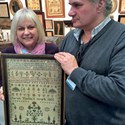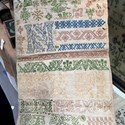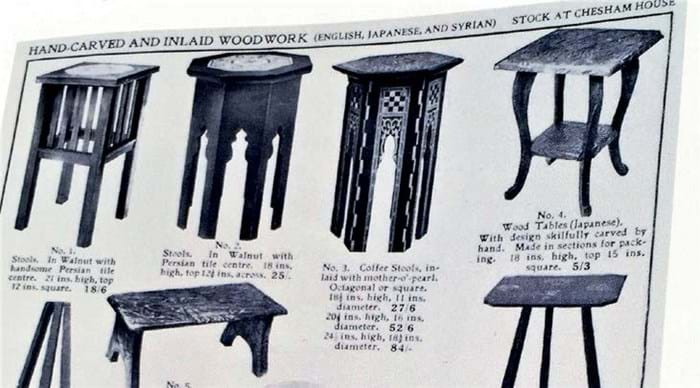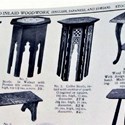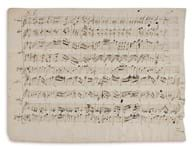The word ‘sampler’ derives from the Latin ‘exemplum’ or the old French term ‘essamplaire’, meaning ‘an example’. Embroiderers and lace-makers from the 15th century onwards used samplers as a promotional tool for work – much like a CV – to record specific designs, stitches and effects.
Hiscock & Shepherd sells samplers from particular schools and families. Examples from the Quaker religion – with its progressive ideas on the education of girls – are “particularly desirable,” Shepherd says. “Certain Quaker schools have their own style and following, with strong geometric lines and prominent use of the Roman style alphabet, in both capital and small letters.”
The rarest American examples have fetched more than $1m but on Hiscock & Shepherd’s stall entry level was £60-100 for a mending sampler. The most expensive was a very fine, ‘cut and drawn’ thread work sampler from 1640 for £6000, a bonus being “we know the family from where this came,” Hiscock said.
Liberty ‘flat pack’ furniture
Flat-pack furniture requiring customer assembly has a surprisingly long history, pre-dating Ikea by many decades. In the US, the first known mention of self-assembly furniture was in the New American Cyclopaedia of 1859, emphasising its ease of transport.
The concept was embraced by that most innovative and avant-garde retailer, Liberty & Co. From its inception in 1875, the firm imported Middle Eastern and Oriental goods sympathetic to the ideals of the Arts & Crafts movement. Some required putting together by customers after their long journey to Liberty’s Regent Street store.
At AAfE, Arts & Crafts specialist Levels Antiques of Somerset was selling one such example for £185: a Japanese carved hardwood table, retailed by Liberty c.1900.
Owners Adrian and Amelia Holt also had a Liberty & Co catalogue of that era, depicting the table as being ‘made in sections for packing’ and its price of 5/3.




